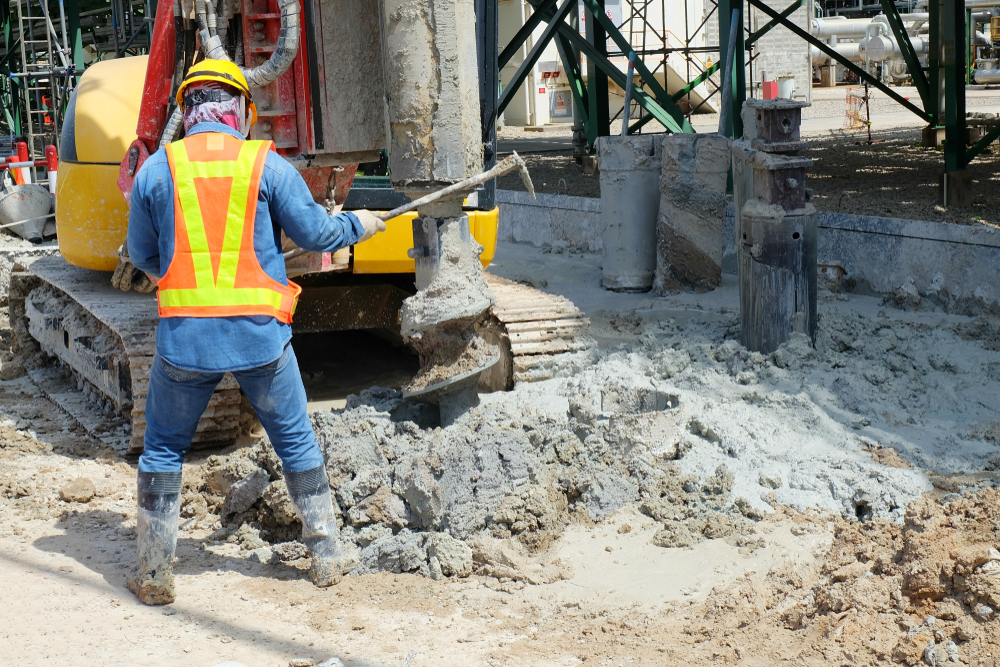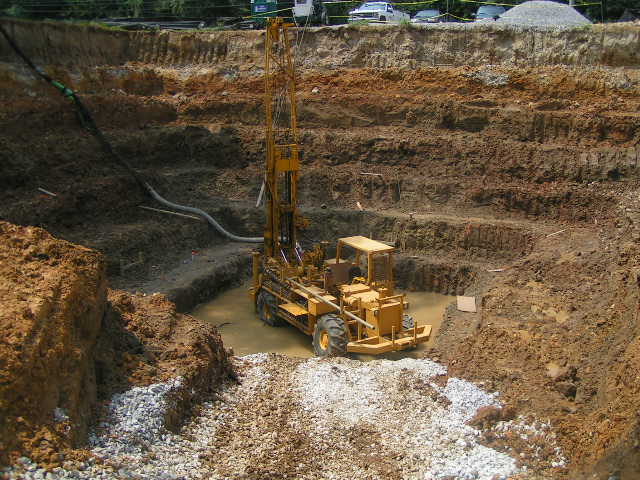How a Geotechnical Specialist Can Guarantee the Success of Your Building Foundations
How a Geotechnical Specialist Can Guarantee the Success of Your Building Foundations
Blog Article
A Thorough Summary of Geotechnical Design Techniques and Their Influence On Modern Civil Design Projects
Geotechnical engineering works as the backbone of contemporary civil design, supplying crucial strategies that address the complexities of subsurface conditions. The interplay of soil evaluation, structure style, and ingenious innovations forms the integrity and sustainability of infrastructure jobs. As we explore these methodologies, it ends up being clear just how essential they remain in mitigating potential risks connected with building. The effects of these strategies extend past plain safety and security; they likewise influence job efficiency and environmental considerations, elevating vital inquiries regarding future innovations in the field. What remains to be uncovered is the transformative potential of these technologies on city growth.
Value of Geotechnical Design
Geotechnical engineering functions as a vital foundation for civil design projects, influencing the security and stability of structures. This discipline concentrates on the behavior of dirt and rock materials, supplying crucial insights that assist the design and construction procedures. By comprehending the communication in between the planet and engineered structures, geotechnical designers can assess threats connected with ground problems, such as negotiation, slope security, and liquefaction.
The relevance of geotechnical engineering extends past simple architectural honesty; it plays a crucial duty in environmental security and sustainability. Properly carried out geotechnical analyses make sure that jobs reduce their environmental impact and abide by regulatory demands (about geotechnical engineering). In addition, geotechnical design is instrumental in website option, enabling designers to identify ideal places for building and construction that minimize possible threats.
On top of that, geotechnical design cultivates development in civil engineering by advancing techniques for ground enhancement, foundation style, and excavation. The self-control's contributions are important in addressing challenges postured by differing soil conditions, therefore helping with safe and reliable infrastructure development. Overall, the value of geotechnical engineering is critical in ensuring that civil design projects are not just practical but additionally durable versus man-made and natural difficulties.
Trick Strategies in Geotechnical Engineering

One more necessary method is soil stabilization, which involves changing soil residential properties to enhance load-bearing capability or minimize negotiation. Methods such as including cement, lime, or using geosynthetics are typically utilized to accomplish soil improvement.
Ground improvement strategies, including vibrant compaction and vibro-replacement, are likewise essential. These methods intend to compress soft or loose dirts, enhancing their strength and minimizing liquefaction potential in seismic locations.
Preserving frameworks, such as sheet piles and soil nailing, are utilized to support excavations and protect against dirt activity. Slope stablizing techniques, consisting of drain systems and keeping wall surfaces, are vital for mitigating landslide risks.

Soil Evaluation and Checking Approaches
Effective dirt evaluation and testing approaches are crucial for comprehending look at this website the chemical and physical residential properties of dirt, which directly influence design decisions. An extensive analysis of dirt attributes is important for anticipating actions under numerous loading conditions and environmental influences.
Common dirt testing techniques include both field and lab methods. Field tests, such as the Criterion Infiltration Test (SPT) and Cone Infiltration Test (CPT), give instant insights right into soil stratification, strength, and thickness. These examinations help engineers assess site problems effectively before more extensive lab evaluations.
Lab screening approaches, such as Atterberg limitations, grain dimension circulation, and compaction tests, are vital for determining soil plasticity, dampness web content, and optimal compaction levels. Furthermore, advanced methods like triaxial examinations and combined undrained (CU) examinations use valuable data on shear stamina and efficient stress specifications - geotechnical companies in south africa.
Chemical testing, including pH, electrical conductivity, and organic material analysis, is additionally vital for comprehending possible dirt contamination and its effect on building and construction materials. Collectively, these soil analysis and testing methods create the structure of notified decision-making in geotechnical design, making sure the safety and stability of contemporary civil engineering jobs.
Foundation Design Approaches
Foundation style techniques are critical in ensuring the security and long life of frameworks. These methods can be categorized right into superficial and deep foundations, each fit to details dirt conditions and loading circumstances. Superficial structures, such as spread grounds and mat foundations, are generally made use of when surface area soils have adequate bearing ability. They disperse the load over a bigger location, decreasing negotiation risks.
In comparison, deep foundations, including stacks and drilled shafts, are utilized when surface dirts are insufficient or weak for sustaining the structure. These structures transfer tons to deeper, extra steady dirt or rock layers, making them vital for skyscrapers and bridges in tough geotechnical conditions.
Choosing the appropriate foundation design entails comprehensive geotechnical examinations, including dirt make-up, birthing ability, and groundwater conditions. Furthermore, designers need to think about elements such as settlement, side lots, and possible seismic task to ensure the foundation's efficiency gradually.
Ultimately, a well-executed structure style is a critical facet of civil design, directly affecting the safety, durability, and performance of frameworks. all about geotechnical engineering. By straightening structure kinds with site-specific conditions, engineers can properly mitigate threats connected with foundation failing
Technologies Forming Civil Design

Lasting materials, such as high-performance concrete and recycled aggregates, are likewise obtaining grip, promoting green methods while keeping structural honesty. In addition, progressed geotechnical methods, such as ground enhancement and deep mixing approaches, are improving the stability of foundations in difficult soil problems.
Furthermore, the use of drones and remote sensing modern technology is enhancing website keeping track of and surveying, offering real-time data that aids in taking care of building progression and safety. The execution of cutting-edge construction techniques, such as prefabricated and modular construction, even more quickens task timelines and lowers waste. Jointly, these innovations are not just changing civil design techniques but also ensuring that modern-day framework additional resources meets the demands click over here now of an expanding worldwide population while addressing ecological problems.
Verdict
To conclude, geotechnical design techniques are integral to the success of modern-day civil design jobs. The application of site examination, soil stabilization, and ground improvement methods makes sure the security and security of infrastructure. Technologies such as Structure Information Modeling (BIM) and advanced surveillance innovations further boost job performance and accuracy. By employing these strategies, engineers can minimize dangers and add to the growth of durable city atmospheres, ultimately promoting lasting growth and safety in civil design practices.
Geotechnical engineering serves as the foundation of contemporary civil engineering, providing vital methods that attend to the complexities of subsurface conditions.Geotechnical design offers as an essential foundation for civil engineering projects, affecting the safety and stability of frameworks.In addition, geotechnical design cultivates advancement in civil engineering by progressing techniques for ground renovation, foundation layout, and excavation. Generally, the value of geotechnical engineering is critical in making sure that civil design tasks are not just feasible but also resilient against natural and man-made difficulties.
In verdict, geotechnical design strategies are integral to the success of contemporary civil engineering projects.
Report this page